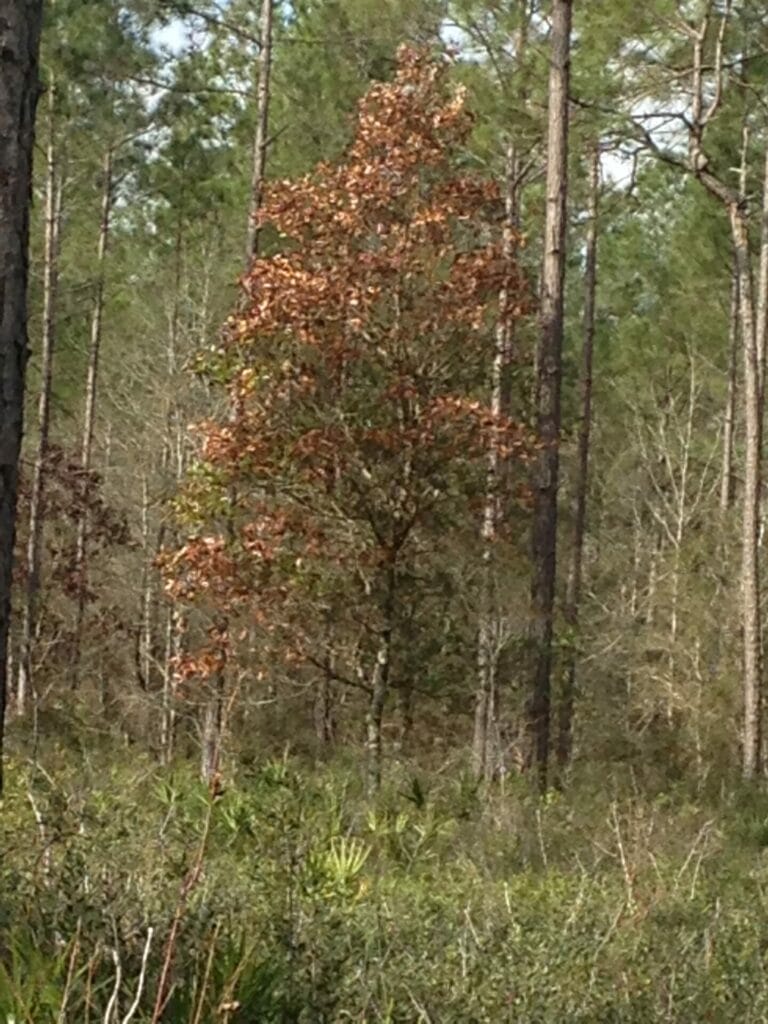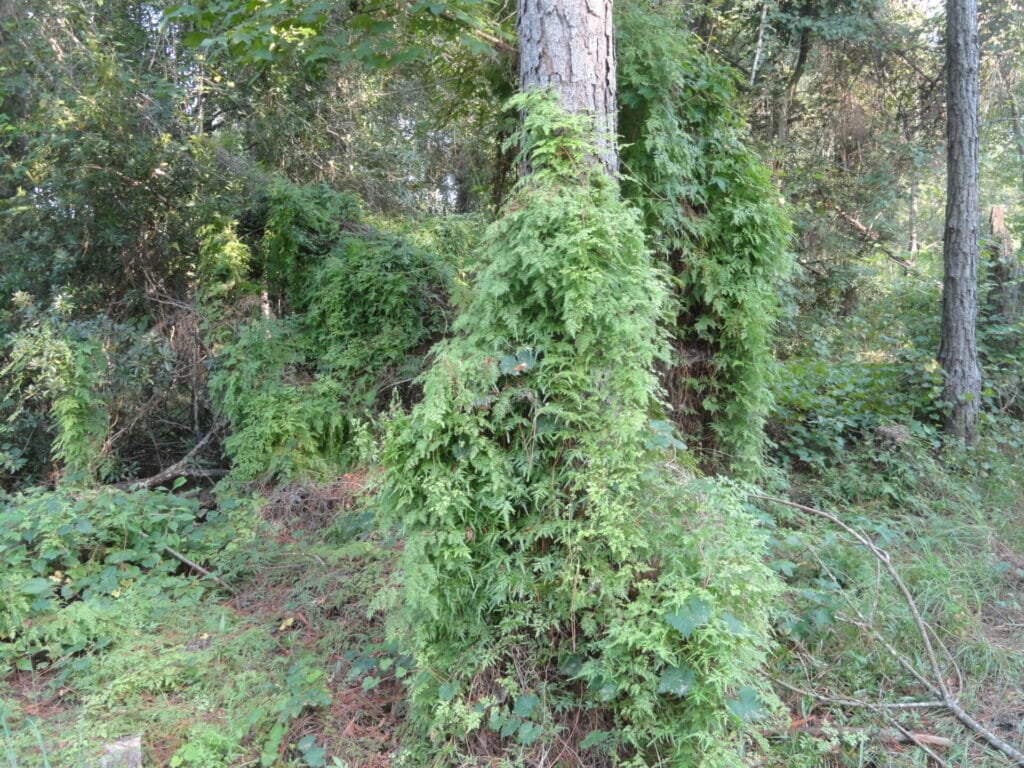Invasive Species Management (Part 1): Prevention
Heather Brasell
Managing non-native invasive plant species is one of the biggest challenges when we work in conservation and restoration. This is the first of three articles on this topic. Other articles will address using mechanical and chemical methods to treat invasive plants.
I spend a lot of time and effort in the woods managing an increasing number of invasive plant species and evaluating my management goals and methods. As I worked in the woods during the COVID era, I reflected on the botanical pandemics, epidemics, and invasions that surround us. It seems to me that the difference between them is really just one of impacts on different scales. Pandemics are global infections of pathogens invading individual organisms. Epidemics are similar events on a more limited geographic range. Invasions usually apply to non-native species invading an ecosystem.
Based on a brief search to satisfy my curiosity, the only botanical disease described as a pandemic I could find is chestnut blight, but Dutch elm disease, emerald ash borer and laurel wilt are described as having caused epidemics. In South Georgia, emerald ash borer hasn’t yet reached us, but we have already lost nearly all of our red bays to laurel wilt disease. Invasions are much more common.

Laurel wilt, which kills redbay (Persea borbonia), is a fungal disease carried by the non-native redbay ambrosia beetle.
We learned a lot about PPE and how to reduce the risk of transmission and mitigate the impacts of COVID. We can apply many of the same practices to our management of invasive plant species – as well as transmissible botanical diseases. Perhaps our new awareness and concern about disease transmission among humans will make it more possible and more palatable to take appropriate actions in the botanical world.
First, prevention is easier than mitigation. Sadly, Georgia is one of only four states that doesn’t have a noxious plant list. Plant nurseries sell plants that are invasive. Then landowners spend millions of dollars each year to try to eradicate the ones that have escaped.
Preventive hygiene limits the scope of invasions. We regularly wash down all equipment that has been operating in areas where invasive plants have produced mature seeds. When Japanese climbing fern spores are mature (from September to spring germination), we avoid using any equipment in sites with known infestations. We also avoid walking near the plants to prevent carrying them on our clothes.

Infestations of Japanese climbing fern (Lygodium japonicum) are a fire hazard. Fronds carry fire into tree canopies.
Focus on preventing spread of reproductive material. Dispose of mature seeds, spores, and plant roots so there is no chance of transporting invasive plants to new locations. There’s a reason why so many invasive plants occur in disturbed areas and along roads and woods trails. The seeds or propagation material are commonly transported by vehicles and equipment. To prevent the spread of invasive plants, I mow all trails on my property so seeds of invasive plants don’t have time to mature and get spread by passing vehicles.
Disturbances invite newcomers. Disturbed areas act like an open door with a welcome mat and the smell of coffee wafting out the door. Disturbances stimulate seed germination in places where there is little competition while they become established. Activities like mowing create less disturbance than disking or cultivating.
Identification and early detection are critical. Field botanists and plant enthusiasts like GNPS members can make a huge impact by recognizing and reporting invasive plants, particularly in places that are off the beaten path. Any time I see a new plant appearing in several locations or spreading patches, I try to identify it as soon as possible. If I think the plant may be an invasive species, I often go to experts for confirmation, particularly if the species has not been reported previously for Georgia or my county.
Reporting infestations helps plant conservation. I am amazed at how few of the invasive plant species listed by GA Exotic Plant Pest Council (GA-EPCC) have been reported for my rural county of Berrien. We can all take photos in the field and report occurrences of invasive plants on the GA-EPPC site. [Note: EPPC is currently transitioning to Georgia Invasive Species Council.] We need data on the range and occurrence of invasive species to establish the need for controlling them and to justify the expense.
Introduce control measures sooner rather than later. It’s a lot easier to control an outbreak early and aggressively rather than wait until the invasion spreads. Controlling individual plants or small areas is not only less time consuming and less costly, but also minimizes collateral damage to native species in the same community. Aggressive treatment is often needed to make sure that no seeds have a chance to mature and expand the invasion. Several of the invasive plants I deal with, including beefsteak (Perilla frutescens) and hairy indigo (Indigofera hirsuta), have several generations of seed production over a growing season. Infestations of these species need multiple treatments each year to prevent seeds from maturing and perpetuating the problem.

Infestations of hairy indigo (Indigofera hirsuta), one of seven invasive legumes on my property, reduce survival of longleaf pine seedlings
Monitoring for outbreaks is essential. You are extremely unlikely to eradicate an infestation of invasive plant species with a single treatment. The second wave of invasion is likely to impact a much larger range than the initial invasion. Depending on the species, I monitor treated sites frequently for at least three years, then periodically after that. I also monitor trails and areas where contractors have been using equipment – logging, road repair, dam construction.
Triage is necessary. We have to face realities; there is no magic bullet to eliminate all our invasive plants in one fell swoop. I have a lot of invasive plant species on my property. When I first started trying to get rid of them, my approach was rather haphazard. It seemed hard to make headway and it was easy to get discouraged. Over the years, I’ve developed a more systematic strategy. Each year, I tackle a new area based on priorities of the habitat (native plants) and the aggressiveness of the invasive species. The new area is manageable – I expect to be able to eliminate all (I hope) of the plants in the site, monitor frequently (about monthly) and retreat as necessary. Then I monitor systematically for the next three years, retreat if needed, then monitor periodically after that. By treating a new area each year, I can keep track of the progress I’m making and make sure I don’t lose the war because I defaulted on the second wave of invasion.
Of course, promoting native plants reduces the opportunity for invasive plants to take over our gardens and our natural communities. Healthy ecosystems are more able to resist infestations.
